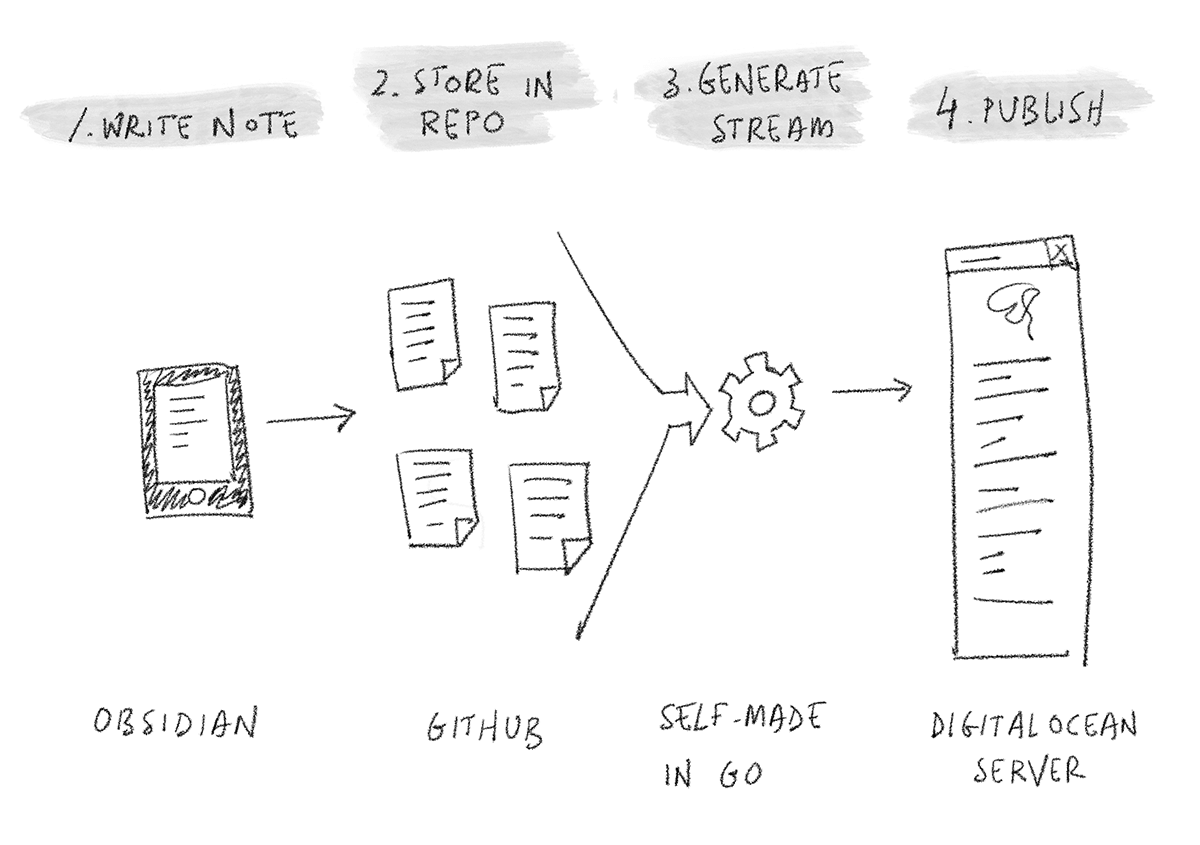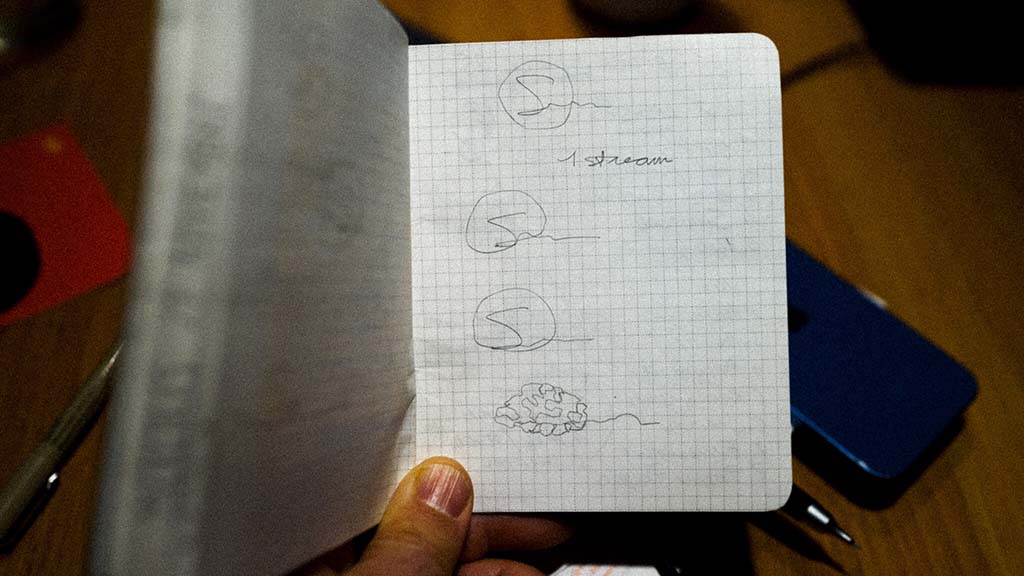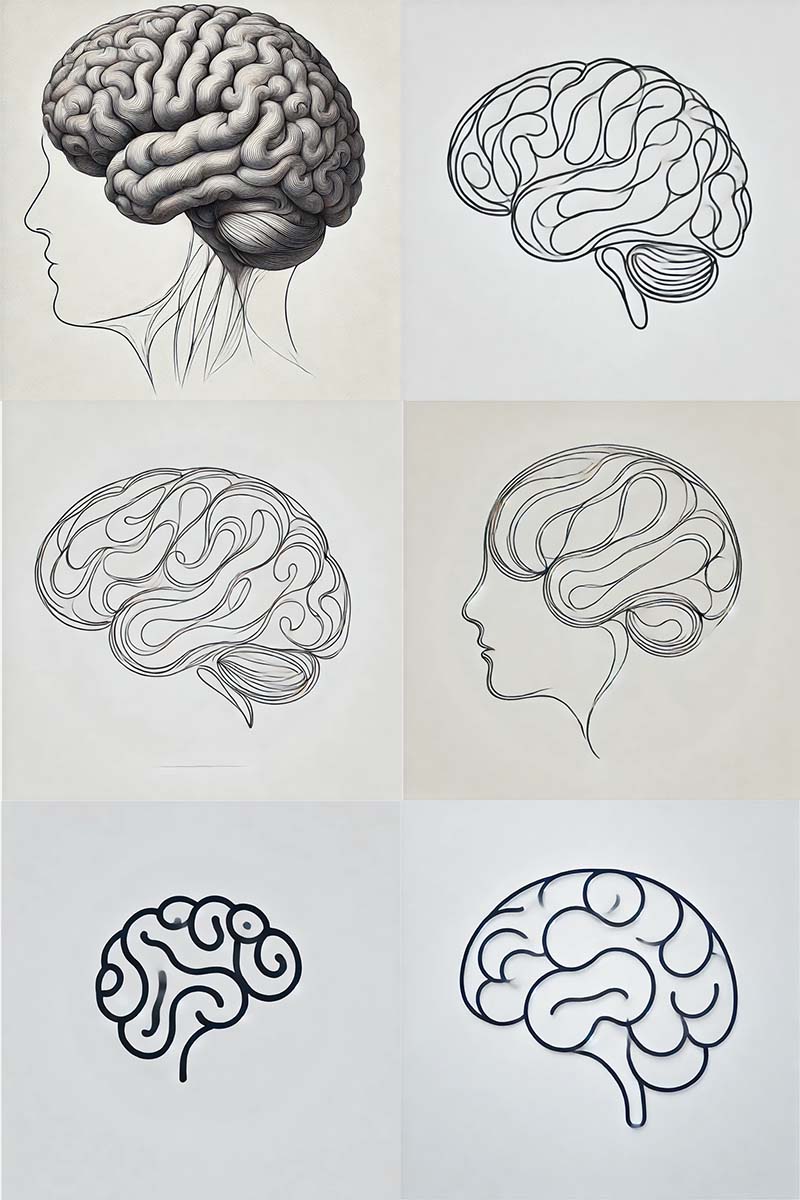Stream of Thought 2025
Nowadays, I take notes regularly in 5 places:
- Journal (analog). An unstructured dump of what’s in my head.
- Bullet Journal/Agenda (analog). To do’s and plans for the day.
- Meeting notes (digital). A web of notes that connect people, projects and areas.
- Project notes (digital). A structured sequence of notes to help visualize progress.
- Stream of Thought (digital).
This post explains what is this Stream of Thought, and how I built it.
What goes into Stream of Thought?
Whatever resonates:
- Quotes
- Things that I’ve read/watched and want to capture.
- Random thoughts that seem relevant.
Principles of design
A system with minimum friction to capture, publish and review notes.
This led to:
- No organization, no structure, no tags, no classification of notes. Just a stream. A feed of thoughts.
- Published on a single web page, one note after another.
- Using only text, to avoid the page to be heavy.
- And introducing some visual stimuli through typography, using2 different styles for short notes and longer posts.
How is it implemented?
From a top-down perspective it works like this:
- I take notes in an app.
- Notes are stored in a folder.
- A generator reads those notes, assembles them in a continuous stream and publishes it.

The notes app is Obsidian, a markdown editor available for all platforms. I take notes in my computer, iPhone and iPad.
Each note is stored in a separate markdown file.
All these notes are kept in a GitHub repo. A little GitHub Actions workflow is responsible for launching the generator and publishing the site every time I push a change to the repo.
I coded the generator myself instead of using some other static site generator like Jekyll, Hugo or Eleventy. The use case was very narrow, it felt simpler to go this way.
When I say myself I mean an AI enhanced version of myself. Given my decent base knowledge in coding but lack of daily practice, AI makes it simpler to build from scratch than to toil with existing low-code user-friendly platforms. The result is code that works and is disgracefully inelegant.
The notes need a yaml front matter with some metadata for the generator to assemble the stream. This minor friction is alleviated by Obsidian’s template feature.
It’s all very pretty straightforward once in place: write the note, push to repo, see how it magically shows up in the website 🚀.
Changes for 2025
I’ve been doing this since 2020. The core idea has stayed the same, but every year I’ve introduced some adjustments.
This year:
- Each note gets its own page, this way I can share them individually.
- I introduced a third style, longform post (like this one!). By implementing 1 and 2 I could create a very convenient publishing system for longer posts that don’t require the heavy production that are my DZines.
- I changed the logo.
The new logo
For 2 years, I had this handwritten header:

I asked my older son to help draft some ideas for the new design. He quickly sketched some options and came up with the concept of a continuous line drawing of a brain.

We asked ChatGPT for some options to see if the idea would fly.

We were on to something… we liked image 3. I tried to execute it by hand in Procreate in my iPad.

I might have done more than 10 attempts, but finally arrived at something we liked.

We showed it to our friend Gabby (art graduate!), who liked it but pushed us a bit further. “Not new, I’ve seen this before… perhaps if you animate it…”. After a very long and tedious session in Procreate and Photoshop…

Still not fully Gabby Approved, but we love it 😍! There we go.
We truly live in the future 🤖.
